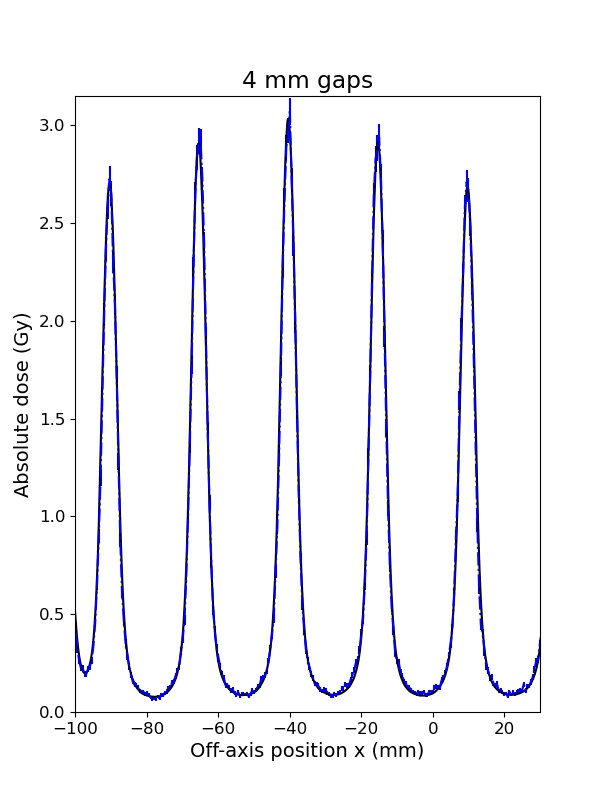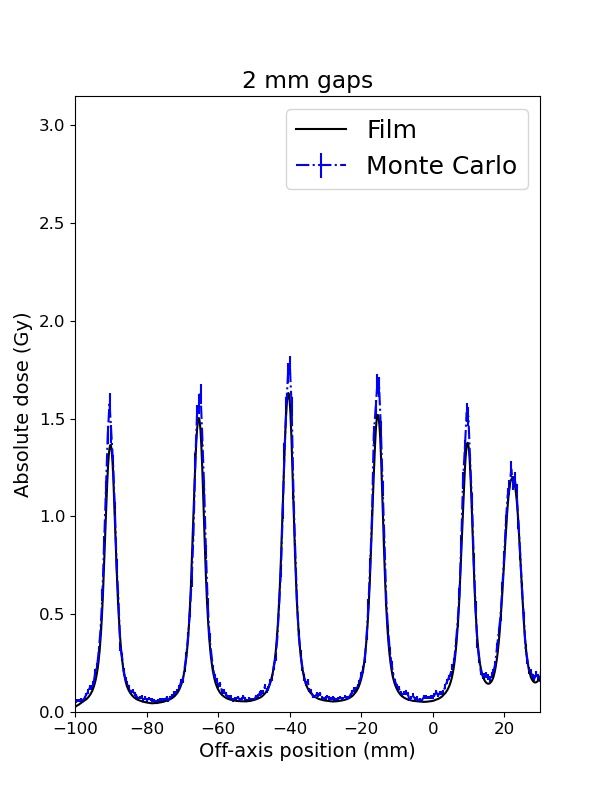Small fields with Varian Halcyon: Monte Carlo and measurements
PO-1832
Abstract
Small fields with Varian Halcyon: Monte Carlo and measurements
Authors: Linda Laakkonen1, Jouko Lehtomäki1, Ari Harju1, Antti Kulmala2
1Varian Medical Systems, a Siemens Healthineers Company, TPS Technology, Radiation Physics, Helsinki, Finland; 2Clinical Research Institute HUCH Ltd., Department of Oncology, Helsinki, Finland
Show Affiliations
Hide Affiliations
Purpose or Objective
Monte Carlo (MC) simulations can serve as computational copies of the radiotherapy treatment machines, and as such can explore the machine accuracy limits. Halcyon (Varian Medical Systems, a Siemens Healthineers Company) treatment system, also used in the Ethos online adaptive workflow, is a new-generation machine to deliver fast and high-quality treatments. The purpose of this work is to investigate the Halcyon accuracy delivering small fields by comparing the measurements with accurate MC model results. We use a MC model, built on top of Geant4, that has a detailed representation of the Halcyon components: the treatment head geometry is modeled closely following the engineering drawings and the dual-layer multileaf collimator (MLC), critical to the model accuracy, is imported to MC as computer-aided design (CAD) files (Laakkonen et al, 2022, Physics in Medicine and Biology (under review)).
Material and Methods
In this work, we consider small fields limited by the dual-layer MLC and compare the results with high-precision film measurements. A dosimetry film was placed at 5 cm depth inside a plastic water phantom of 40 x 40 x 10 cm³ having a source to phantom distance (SPD) of 95 cm. The dose plane at 5 cm depth was scored at voxels of 0.5 x 0.5 x 2 mm³. The Geant4 physics list “QGSP_BIC_EMZ” with extended electromagnetic physics configuration “EM Opt4” was used. The production cuts for secondary particle generation were set to 0.1 mm. We have investigated fields limited by both MLC layers separately, as well as more interesting combo limited fields that use both layers. We have studied both static and modulated plans.
Results
As an example of the results, Figure 1 shows the MC simulated and measured dose profiles with static 4- and 2-mm openings. The 4 mm gaps shown on the left panel shown a perfect match of the MC simulations and measurements, there are no discrepancies found and the agreement is clearly within the MC error estimates. The more extreme combo case of tiny 2 mm gaps shows a small difference: MC dose peaks are somewhat higher than measured. The overall agreement even there is very good.


Figure 1: Monte Carlo and measured profiles with static 4 mm and 2 mm gap openings.
Conclusion
The Halcyon dose delivery accuracy was found to be high for even complicated fields. The 4 mm gaps above showed a perfect match between measurements and simulations. Reaching to small 2 mm openings, some deviation was seen for the combo case. This dose difference might be due to uncertainty of the mechanical leaf gap value used for in the MC simulations, or the positioning of the stacked MLC leaves. In addition, one explanation could also be the known mechanical slack in the MLC leaf control (Kulmala et al, ESTRO 2022, [Poster]). This feature of a collimator design is significant especially when small fields and dual-layer MLC are introduced. Overall, the results show that the Halcyon treatment machine can deliver dose rather accurately on this millimetre regime.